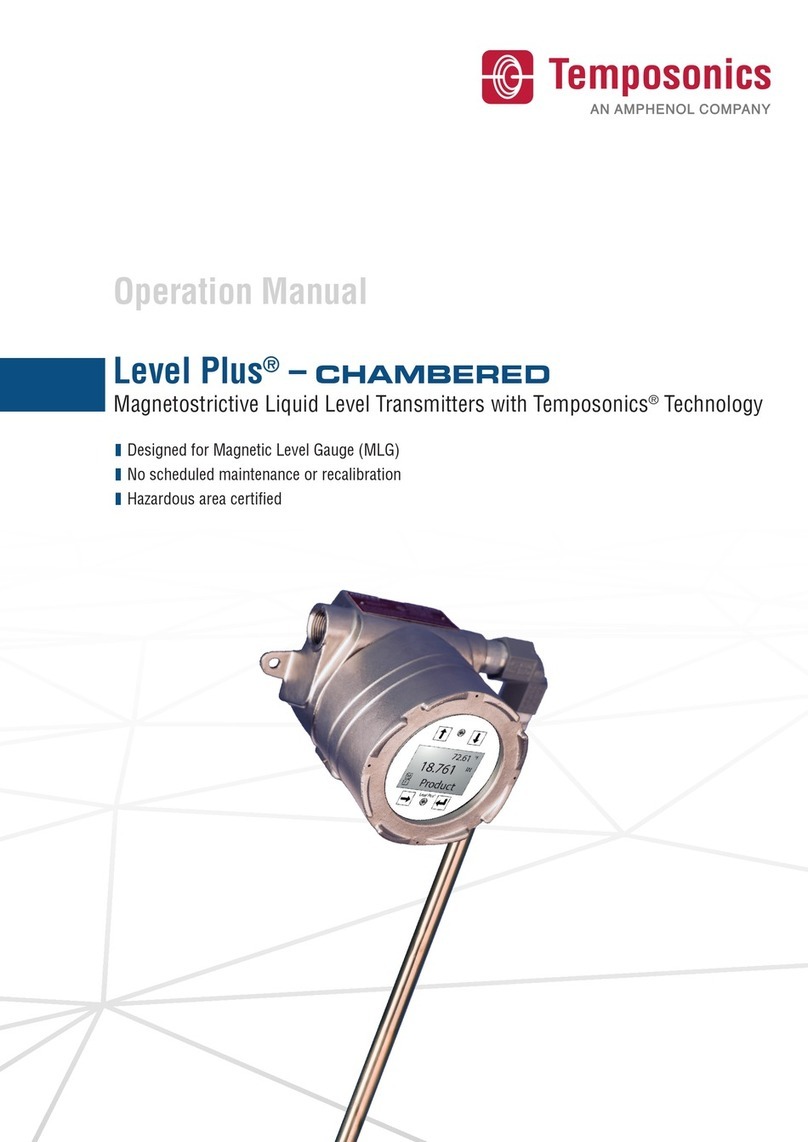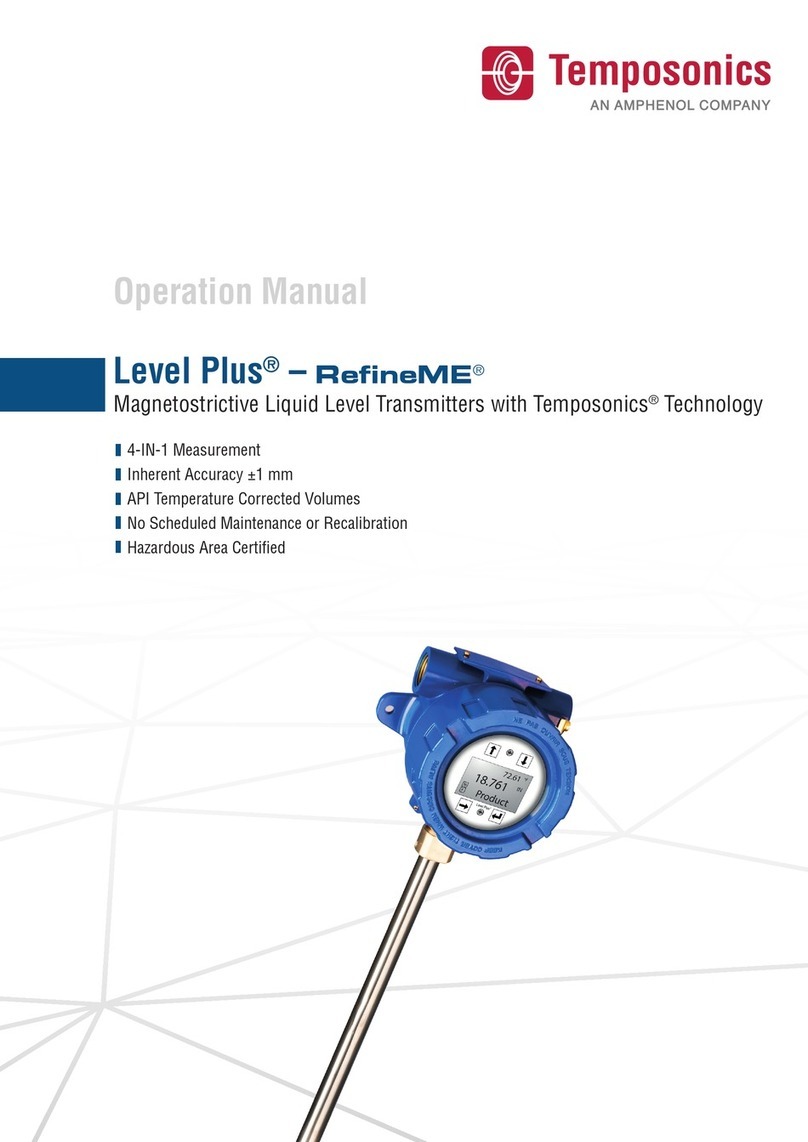
Level Plus® LLE
Operation Manual
I7 I
5. Product overview
The Level Plus LLE satisfies the demand for an accurate and robust
liquid level transmitter for general purpose applications. The LLE can
provide product level and/or interface level in a compact mechanical
design. There is no requirement for scheduled maintenance or
recalibration for the expected 10 year life of the sensor. Set it and
Forget it.
The LLE liquid level transmitter can be mounted on most tanks
offering NPT and RF flanged connections from 3/4 to 6 inches. The
LLE also offers a variety of outputs including analog, CANbus, SSI and
IO-Link. Included in the model number is the selection of float, cable,
and stop collar options. The single model offers everything needed for
level measurement in a variety of applications.
Applications
• Hydraulic Reservoir
• Industrial Printers
• Firefighting Airplanes
• Waste Management
• Generators
• Process Tanks
• Skids
Features
• Product and Interface Level
• No scheduled maintenance or recalibration
• Inherent Accuracy +/- 0.5 mm
• IP69K
• 100 g Shock/15 g Vibration
5.1 Components
The Level Plus®LLE liquid level transmitter consists of four main
components; a base model, float, adaptor, and optional temperature
measurement. Varying the components of the transmitter allows the
transmitter to be customized to almost any application.
Base Model
The base model of the LLE consist of the housing, 3/4” NPT threads,
M12 connector, and either a 7 mm or 10 mm pipe. The drawing of the
base model is shown in section 5.7 Technical Drawing.
Floats
LLE transmitters offer numerous floats for different applications such
as stainless steel for both product level and interface level. To be able
to accurately detect the interface level there needs to be a difference
of at least 0.05 in specific gravities between the product and interface
liquids. For detailed information about floats, refer to the ‘Accessories
Catalog’, (Temposonics Part # 551103).
For assistance with selecting a specific float for your application,
please contact Technical Support with the following information:
• Specific gravity of liquid(s) being measured
• Process temperature
• Process opening size
• Vessel pressure
Adaptor
The LLE is available with multiple adapters to allow for mounting of
the standard 3/4” NPT fitting into larger openings. Available adapters
include NPT fittings from 1” to 4”, ANSI flanges from 1” to 6”, SAE 5
bolt adapters, and custom flanges.
Temperature Measurement
The LLE offers an optional temperature measurement for analog
outputs models with a direct RTD output from a PT100 Class A RTD.
The RTD is located at 2" from the tip of the pipe for order lengths less
than 20" and at 10% of order length for all other lengths.
Accessories
Temposonics also offers a series of displays, housings, converters,
and other accessories, please refer to the ‘Accessories Catalog’,
(Part#551103).
5.2 Accuracy
For magnetostrictive transmitters inherent accuracy is measured
in terms of non-linearity. Non-linearity is a measurement of any
imperfections in the waveguide that are reflected in the linearity of
the transmitter’s output. Temposonics tolerances reflect a maximum
non-linearity of +/- 0.5 mm. Temposonics is able to achieve such
strict tolerances by manufacturing all of its own waveguide from a
proprietary alloy and testing 100% of all transmitters before shipping.
5.3 Warranty
Important:
Contact Technical Support or Customer Service for assistance if
you suspect that the transmitter is not working correctly. Technical
support can assist you with troubleshooting, part replacement, and
Returned Material Authorization (RMA) information if required.
All Level Plus®transmitters come with a two year limited warranty
from the factory shipment date. An additional extended warranty can
be purchased. A Return Materials Authorization (RMA) number is
required and must accompany any transmitter returns. Any unit that
was used in a process must be properly cleaned in accordance with
OSHA standards, before it is returned to the factory. A Material Safety
Data Sheet (MSDS) must also accompany the transmitter that was
used in any process.
The Temposonics obligation is limited to repair or replacement of any
defective part of the unit. No warranty can be provided for defects
that are due to improper use or above average stress of the product,
as well as for wear parts. Under no circumstances will Temposonics
accept liability in the event of offense against the warranty rules, no
matter if these have been assured or expected, even in case of fault or
negligence of the company.






























